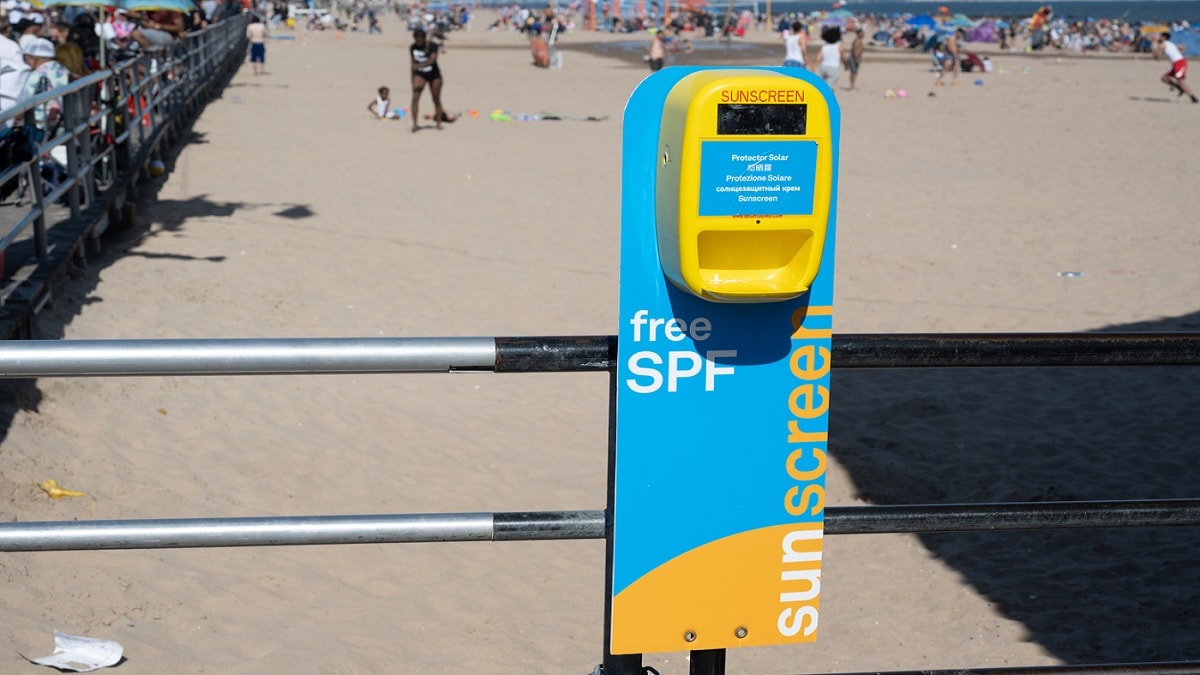What to know
The Pennsylvania Comprehensive Cancer Control Program focused on skin and liver cancer prevention.

Childhood Is best time to start cancer prevention
More than 40% of cancer deaths1 are caused by preventable risk factors. For many types of cancers, the best time to start prevention activities is during childhood.
Several organizations and guidelines recommend primary cancer prevention interventions for children and adolescents.23456 They include the Advisory Committee on Immunization Practices, The Community Guide to Preventive Services, Healthy People 2030, and the National Academies of Sciences, Engineering, and Medicine.
In 2019, CDC's National Comprehensive Cancer Control Program funded a demonstration project to encourage primary cancer prevention in children. It chose three states to conduct activities designed to reduce the number of future cases and deaths from liver, cervical, and skin cancer. Program recipients chose evidence-based strategies that addressed one or more of these cancer types.
Pennsylvania uses multiple approaches to promote cancer prevention
For its demonstration project, the Pennsylvania Comprehensive Cancer Control Program (PA CCCP) focused on skin and liver cancer prevention.
For skin cancer, the program worked with the Pennsylvania Department of Conservation and Natural Resources to implement a sun-safety intervention at state parks that have swimming and boating recreational areas. The intervention built on the strong evidence that increasing sunscreen use in outdoor recreational and tourism settings can help prevent skin cancer.2 It promoted skin cancer education and sun-protective behaviors and provided sunscreen dispensers in state parks.
For liver cancer, the PA CCCP focused on patient and provider education designed to promote hepatitis B and C screening and hepatitis B vaccination. Program staff developed and distributed patient and provider educational materials and presented two continuing education webinars for health care providers.
Project achievements
- Eight state parks participated in the sun-safety program. Parks were prioritized because they have recreational areas—like pools, lakes, and beaches—with high potential for sun exposure.
- The sun-safety program received media coverage from across the state and recognition by the governor's office.
- The program worked with PENNIE, the state's health insurance exchange, to participate in health fairs in 14 counties. It contributed posters and brochures about perinatal hepatitis B and C in English and Spanish. The program also displayed posters in YMCA facilities in all 14 counties.
- The program set up sunscreen dispensers at all participating state parks.
- The program provided sun-safety training for 28 state park staff members.
- The Pennsylvania Department of Conservation and Natural Resources shared information about its collaboration with the PA CCCP when it hosted 39 states for the National Association of State Park Directors Conference in 2021.
- The program worked with the state health department to develop educational materials for liver cancer prevention, including two webinars for continuing education credit.
Takeaways and lessons learned
At the end of the demonstration project, Pennsylvania reported that:
- Working with partners made implementation and evaluation easier and is critical for success.
- Being flexible was important during the COVID-19 public health emergency, which affected partnerships and activities and delayed contract agreements.
- Continuing to develop and promote on-demand educational options for health care providers will be especially important because of COVID-19 and competing priorities.
- Maintaining electronic mailing lists of existing and new partners promotes open communication and information-sharing.
- GBD 2019 Cancer Risk Factors Collaborators. The global burden of cancer attributable to risk factors, 2010–19: a systematic analysis for the Global Burden of Disease Study 2019. Lancet 2022;400(10352):563–591.
- National Cancer Institute. Evidence-Based Cancer Control Programs. Making Effective HPV Vaccine Recommendations. Accessed October 31, 2022. https://ebccp.cancercontrol.cancer.gov/programDetails.do?programId=26926144
- Schillie S, Velloszzi C, Reingold A, et al. Prevention of hepatitis B virus infection in the United States: recommendations of the Advisory Committee on Immunization Practices. MMWR Recomm Rep. 2018;67(1):1–31.
- Meites E, Kempe A, Markowitz LE. Use of a 2-dose schedule for human papillomavirus vaccination—updated recommendations of the Advisory Committee on Immunization Practices. MMWR Morb Mortal Wkly Rep. 2016;65(49):1405–1408.
- National Academies of Sciences, Engineering, and Medicine; Health and Medicine Division; Board on Population Health and Public Health Practice; Committee on a National Strategy for the Elimination of Hepatitis B and C. A National Strategy for the Elimination of Hepatitis B and C: Phase Two Report. Strom BL, Buckley GJ, eds. National Academies Press; 2017.
- US Department of Health and Human Services. Healthy People 2030. Accessed March 2023. https://health.gov/healthypeople
